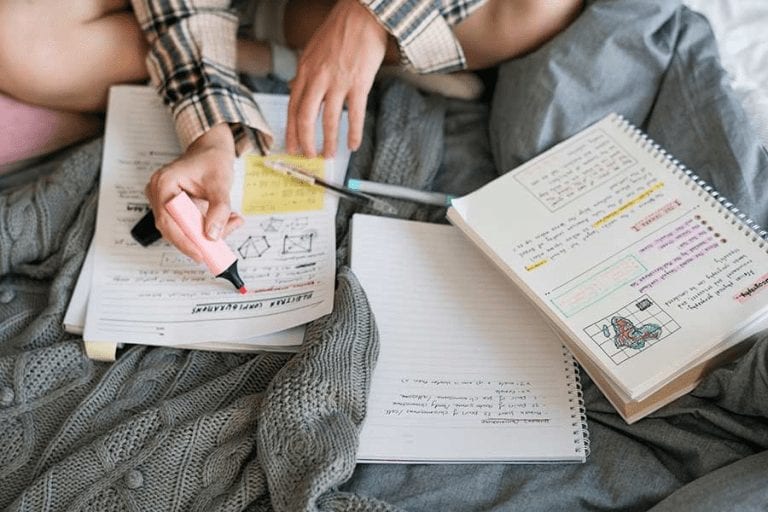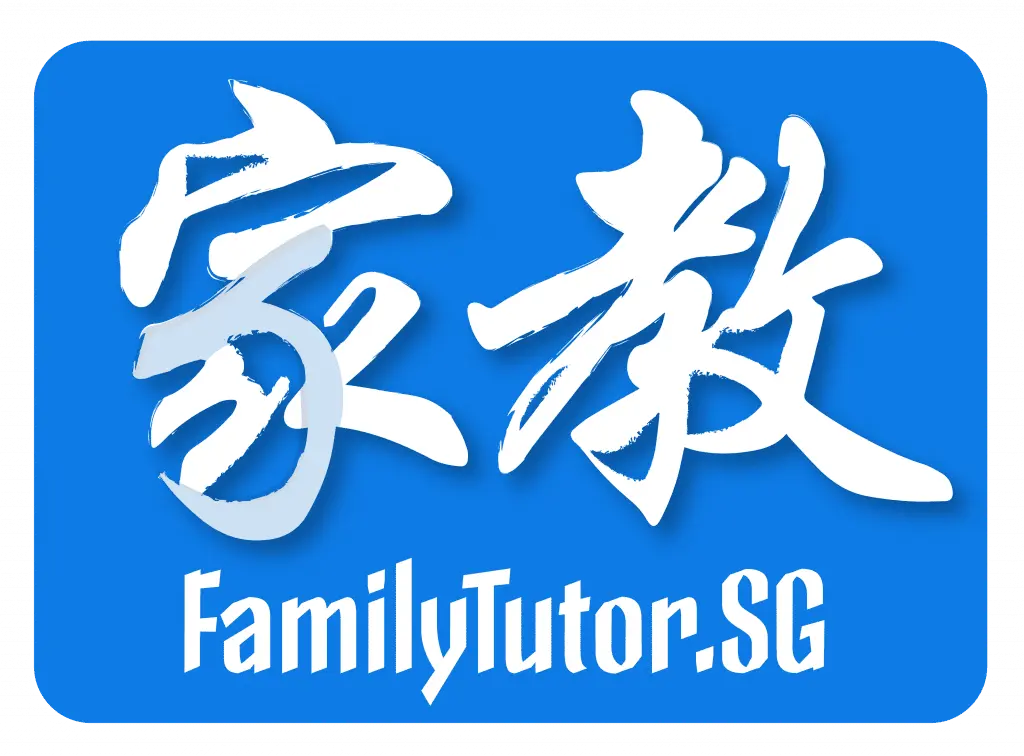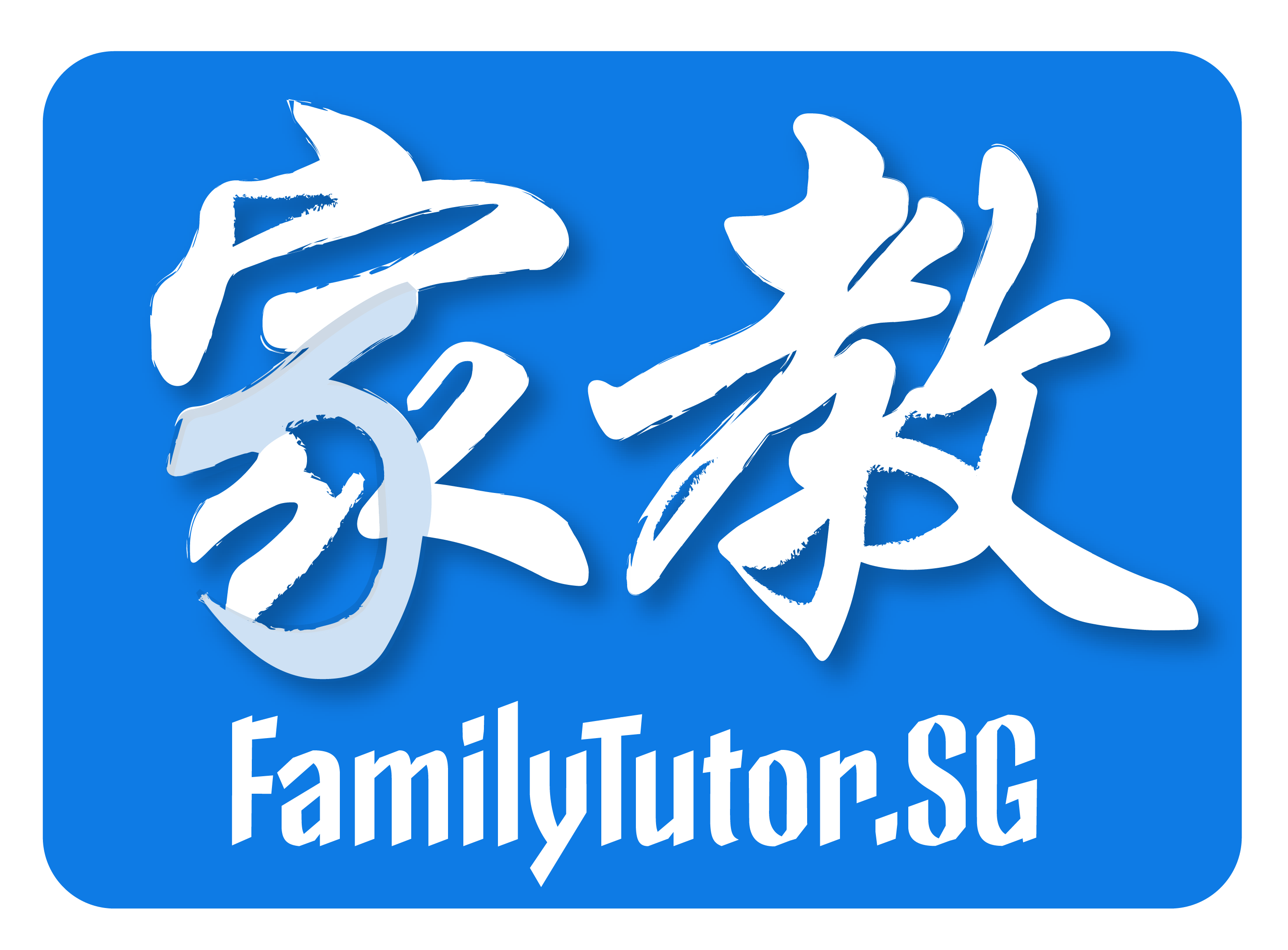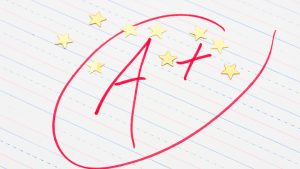
Note-taking Tips for Students

Have you ever found yourself in a situation where you are confident you have studied enough for the exams and are sure that every bit of information necessary to ace the exam is in your brain, only to find out that there are a few questions that whose answers are not included in the textbooks? You try to ask your seatmate if they had trouble with the same number, but find out that they knew the answers to the questions because they had it in their notes.
You scan the notes you took during the discussions but find nothing related to the answer. That is when you realize that you couldn’t include those terms in your notes because you had trouble catching up with the discussion while taking notes.
The situation above would not fit everyone and is not a common phenomenon. However, the situation sheds light on the importance of note-taking during the teacher’s lectures and discussions.
Not all the necessary information needed in a certain subject is found in the textbooks one buys in the local bookstore. There will be times when important pieces of information can only be encountered in the discussions of teachers and professors.
Note-taking is an important part of the strategy used by individuals to reach academic success. However, not all individuals are born with the innate talent to effectively take notes during discussions and lectures. But fear not, for this article will discuss how to effectively and efficiently take notes during discussions to reach academic excellence.
Why good notes matter
Even though some may argue that you can get the same amount of information without the hassle if you would only purchase source material such as a textbook, there will still be benefits for taking good notes.
● Useful for reviewing
Not all source materials hold all the necessary information that will come out during exams. Some can skip over a few important parts while others lack information regarding a certain topic. However, notes on the other hand, are the contents of what your teacher or professor discussed. And unless you are taking a national exam like the PSLE, or an exam administered by a foreign body such as the IELTS, then chances are that your professor will be the one who will create the exam.
It is always better to have more sources to study for when preparing for an exam. And notes are a great supplement for the information that may be lacking in the textbooks. Note-taking also offers a personalized form of the information discussed in order for an individual to better understand the topic without having to encounter a technical term every few phrases.
● Improved cognitive function
Note-taking also offers another benefit other than being a second layer of insurance for the exams. Note-taking also allows an individual to practice their multi-tasking skills since they are both writing down information and listening to the discussion at the same time.
This will improve an individual’s cognitive function which is always a positive outcome for any activity. Improved cognitive function will be able to help an individual further progress in academics. The multitasking skills one will learn will also be very beneficial for future activities that require intensive multi-tasking.
● Saves time and energy
Another benefit note-taking also entails is the fact that they save time and energy. If the discussion was not found in the textbook, then the most logical thing to do would be to record the discussion and listen to it later to take proper notes.
But the process of pausing and repeating the record will cost an individual time and energy. That time could have been allocated to studying the actual contents of the discussion rather than making a summary from it if only the individual took notes while the lecture was ongoing.

How to take good notes
Taking good notes efficiently requires a lot to consider and take into account. From various note-taking methods, abbreviations one will use, to the format of the notes they will take. It is a long process that will bear sweeter fruit the more you continue cultivating it. Listed below are the steps and a few pointers on how to effectively take good notes during a discussion or lecture.
1. Prepare
The first and most important part when an individual is planning to improve their note-taking skills is the preparation stage. One cannot magically improve their skills overnight. One needs to prepare ahead for the challenge they will face once they want to take better notes during class.
There are a lot of aspects to prepare for when one is planning to improve the notes they take during class. There will also be a lot of challenges that they will face in the process. One of these challenges includes the task of splitting their attention from listening to the lecture attentively and effectively taking down notes to study later.
Multi-tasking is a hard feat to pull off, especially if one has no experience with it yet. When preparing the necessary tools and skills needed to effectively take better notes, multi-tasking should be one of the priorities.
One can start by preparing during the break between semesters. Start by listening to online podcasts and take notes as effectively as you can. However, make sure that after listening to every podcast, you can state what the lecture entailed to make sure that you were still paying attention to the podcast while taking notes. This will exercise your ability to split your attention span between taking good notes while still being able to comprehend the lecture. There are also other aspects one should prepare as well, such as:
● Abbreviations
Another great way to prepare for effective note-taking is to assign abbreviations for words one commonly uses throughout their academic life. Words such as difference, because, and without often take a long time to write down. But once they are abbreviated to dif, bec, and w/o, they become considerably easier to write down and take up less time.
It is important to efficiently write down long words quickly as the lecturer does not often stop to let those taking notes catch up to the discussion. One needs to keep up with the pace of the discussion in order to take effective notes that can still be used for studying.
Abbreviations are a great way to reduce time spent on writing to catch up with the pace of the lecture. Given that you have a master list of all the abbreviations you will use, then it would only be a quick deciphering session at home to make the notes you will take readable by a regular individual. You can opt to prepare at least 20 abbreviations to use for note-taking as a starting point and slowly build up the numbers to help you take notes much more effectively and efficiently.
● Read up on note-taking methods
There are several note-taking techniques out there that exist to help individuals take better notes at the expense of a few hours of practice. These techniques can be really helpful to get you to take notes quicker and more effectively. However, each method has its own set of patterns and rules to follow to allow for smooth note-taking.
One such example of a note-taking method you can work on is the Cornell method. This method does not have any special words to use or specific abbreviations. Rather, this method takes into consideration the structure of the notes and where they are placed in the paper.
The Cornell method recommends that one divide the space of the paper into three separate parts. One for the note-taking area, one for the cue column, and another one for summaries. The note-taking area should be the one that takes up the majority of the space of the paper, while the cue column should be on the left-hand side of the notes to give cues or keywords to certain topics in the notes area. The final part of the paper should be allocated to the summaries one will make once they are done taking notes during classes.
Some methods require all the vowels to be omitted to save time. Choose a method you are comfortable in to make the best use of the method. Being comfortable in a method will allow for an easier time understanding and mastering the method.
● List important or repeating terms
Oftentimes, the topics that will be taught to students are repeated every year. You can use this to your advantage by researching what topics will come out during the next semester. They try to look for terms that are constantly repeated and are staples of the topic. You can then make special abbreviations for these terms to save time when taking notes during classes.
As mentioned earlier, abbreviations will allow an individual to save time when taking notes during class in order to catch up to the pace of the lecture. And the more abbreviations there are, the more time an individual will save.
● Practice ahead
The final step for the preparation stage is where an individual must practice and utilize every method they have prepared. One can do so by simply writing down notes for podcasts or videos found online. This exercise will allow one to be fully prepared when taking on the actual task of taking effective notes during discussions or lectures.
Practicing will improve the rate at which one can write down words. It will also allow an individual to be better acquainted with the abbreviations they have set. This will make the actual task a whole lot easier as the individual will now have experience taking down notes effectively while still being able to catch up to the lecture.

2. Listen attentively
After the preparation stage comes the actual note-taking part. And the first thing one should do is to listen attentively to the lecture or discussion. Avoid being too engrossed in the act of jotting down the notes written on the board and forgetting to pay attention to the actual discussion.
Listening to the discussion or lecture attentively will allow for an individual to better understand the topic, hence, they will be able to take better notes. There will also be instances when the teacher or professor will not write down pointers or terms on the board and will only discuss them with the class orally. Listening attentively will help an individual catch these elusive pointers and terms.
3. Determine what is important
Now that you are sure that both the visual and audible input of information is consistent, it is now time to filter out what is important and what is irrelevant. No matter how fast one can write down words, they will still get tired from jotting down every word uttered by the teacher or lecturer.
It would be better to filter out irrelevant parts from the important ones so that one does not waste any time on terms that will not come out of the exam. Filtering out the important parts of a topic is a crucial step that can dictate the quality of the notes one takes.
Notes filled with all the information uttered in the discussion or lecture are no different from a regular textbook. The irrelevant parts can even make the notes messier and more difficult to understand. This is why it is of great importance to filter out the contents of the discussion or lecture to effectively take good notes.
4. Use the right format for the job
The format is also an important aspect that one should consider when trying to effectively take notes during class. There are a lot of formats one can use for taking effective notes during discussions or lectures. However, some of these formats are only applicable in certain areas and topics. The list below provides four of the most commonly used formats for note-taking along with their strengths and weaknesses. This will allow an individual to choose the right format for the topics that will be discussed.
● Outline
The outline format can come in many variations and configurations. Some use bullets, others use numbers, while others tend to use pyramids. However, the main benefit and purpose of the outline format is to arrange and organize parts of the lecture by the main point.
This allows for a smoother separation of unrelated ideas and will make understanding the contents of the lecture much easier. However, the outline format lacks can sometimes be a little too messy as there will be times when information is continuously added to a topic throughout the discussion and ends up ruining the format.
● Flowchart
Another format one can use when taking down notes is by making a flowchart of events. This format is very useful when taking notes on lectures or discussions about subjects such as history or literature. One can also use this format to take notes of the steps in a process that need to be executed in order. Any topic that has events that need to be in order will benefit greatly from this format.
One can also add visual flair to the flowchart in the form of symbols to signify key events. However, flowcharts take a considerable amount of time to construct and require a lot more effort as one will try to jot down notes in sequence rather than randomly. If you can somehow get over this hurdle, then you will be met with one of the most organized formats of taking notes there is.
● Charting method
The charting method, also known as the column format, is a format of note-taking that divides the space in the paper or notebook into columns. Main points are then written at the top of each column while the supporting points are written below the main points.
This format is slightly similar to the outline format but instead of bullets and numbers, the column method uses columns to separate unrelated ideas and bring together related ones.
The column method shares the same advantages possessed by the outline format where ideas are grouped better but overcome the messy burden of the outline format by allowing the individual to freely add more information to the columns.
The main downfall of the column method is that it does not fit neatly when the discussion is about events and only does well when the discussion includes the main point and supporting points.
● Sentence method
Often referred to as the standard of note-taking, the sentence method is where the notes taken by an individual are in sentence form. Sentences allow for a better understanding of the context and how each term is used. This would be of great help to avoid confusion later on when the individual reviews their notes.
The only drawback for the sentence method is the fact that sentences take too long to write completely. There are words in the sentence that are only there to make the grammar correct and thus have a purpose related to note-taking. Other than that, the sentence method is a solid choice to choose as a format for your note-taking.
5. Refine your notes
After taking down notes during discussions or lectures and using the right format to do so, one can then review the notes they took at home. This will allow an individual to spot any errors they may have made while taking notes in class. This is also a great time to gauge your skills in note-taking.
Refining the notes that one has taken means that one should make the notes more organized and neater to make them easier to understand. One should also decipher the abbreviations they have used if they intend to lend the notes that they took to someone else.
Conclusion
After your hard work, it is now time to reap the fruits of your labor by studying the notes you worked so hard to take. This will be a great academic achievement for you and will mark the start of even more achievements. And if you want another way to excel academically, then visit us at FamilyTutor, a leading home tuition in Singapore. We offer private tuition on all grade levels with a variety of subjects to choose from.

Carelle
Carelle is a teacher who has been through the ups and downs of the teacher and learner life. She wishes for every learner to gain educational satisfaction that will help embody the people they want to be in the future.
Tell Carelle Below What You Think About Her Post!

About FamilyTutor!
FamilyTutor is an established home tuition agency in Singapore! We match suitable home tutors for our clients not just to improve the students' academic grades, but also to build a strong rapport and meaningful relationship with the students and even the their whole family. FamilyTutor put every student in good hands!
If you need an excellent home tutor, feel free to call/WhatsApp us at +65 8777-2168! Our matching service is free!
Related Posts!
Follow Us On Facebook!
Our Service!
- Home Tuition in Singapore
- Home Tutor in Singapore
- Home Tuition Rates in Singapore
- Preschool Home Tuition
- Primary School Home Tuition
- PSLE Home Tuition
- Secondary School Home Tuition
- ITE Home Tuition
- N Level Home Tuition
- JC Home Tuition
- A Level Home Tuition
- Polytechnic Home Tuition
- University Home Tuition
- A-Math Home Tuition
- Biology Home Tuition
- Chemistry Home Tuition
- Chinese Home Tuition
- Economics Home Tuition
- English Home Tuition
- Geography Home Tuition
- H2 Chemistry Home Tuition
- Higher Chinese Home Tuition
- Hindi Home Tuition
- History Home Tuition
- IB Chemistry Home Tuition
- IP Chemistry Home Tuition
- IP Math Home Tuition
- IP Home Tuition
- JC Chemistry Home Tuition
- Literature Home Tuition
- Malay Home Tuition
- Math Home Tuition
- O Level Chemistry Home Tuition
- O Level Math Home Tuition
- O Level Physics Home Tuition
- Online Home Tuition
- Physics Home Tuition
- POA Home Tuition
- Science Home Tuition
- Tamil Home Tuition
Education Levels
National Exams
Math & Science Subjects
Language Subjects
Japanese Tuition
Korean Tuition
German Tuition
Humanities Subjects
Social Studies
Chinese Literature Tuition
About Us
FamilyTutor is an established and the people’s favourite home tuition agency in Singapore! We match a suitable tutor for you not just to improve the student’s grade, but also to build a good rapport and meaningful relationship with the student and even with the student’s whole family! With FamilyTutor, every Singaporean son & daughter is in good hands.
Contact Us
- 8777 2168
- 8777 2168
- Mon-Sun 9am-10pm (Including PH)
- contactus@familytutor.sg
- 17 Petir Road Singapore 678278



